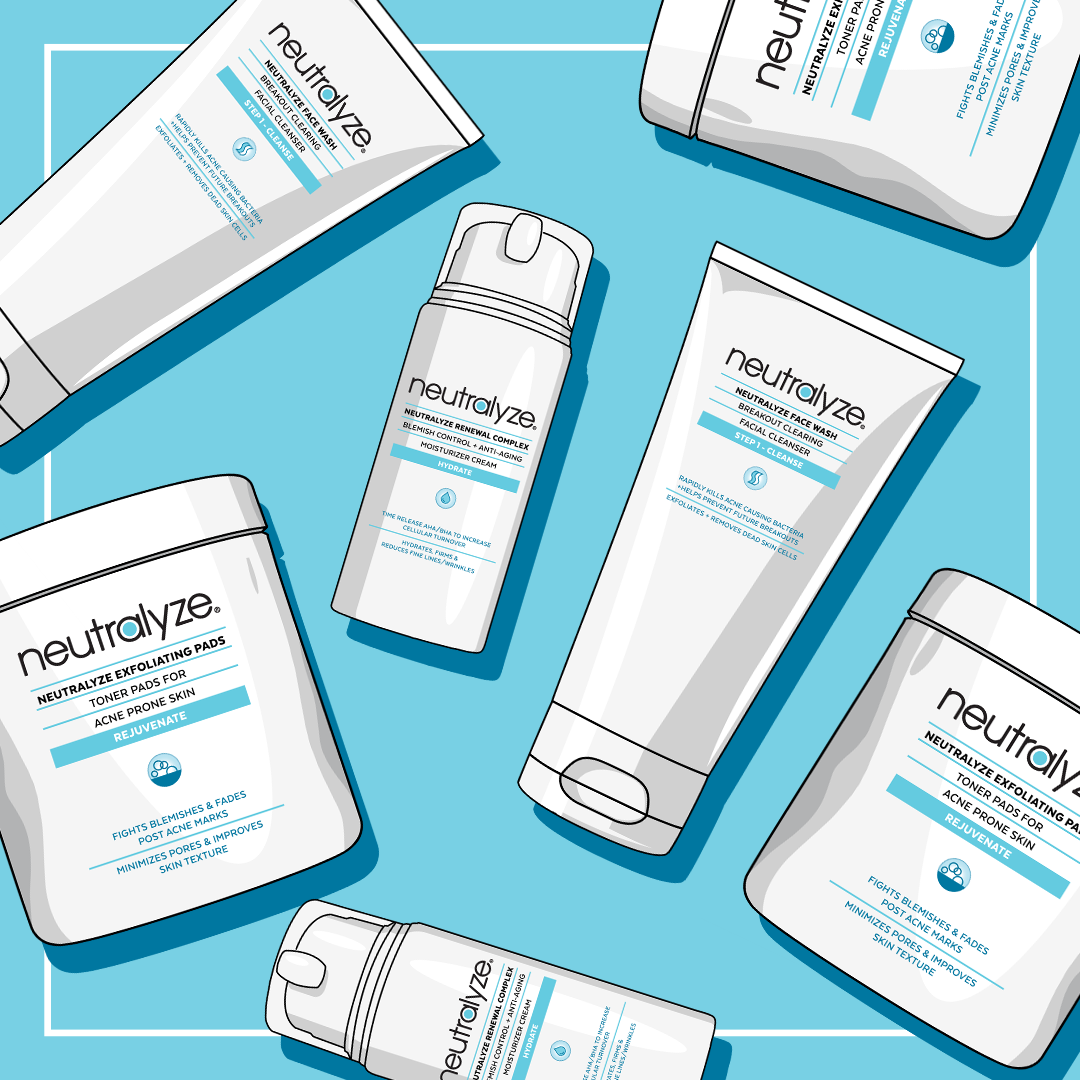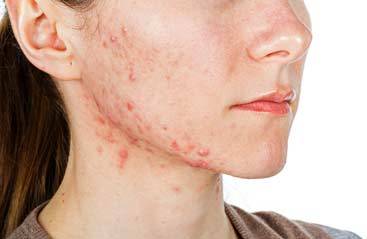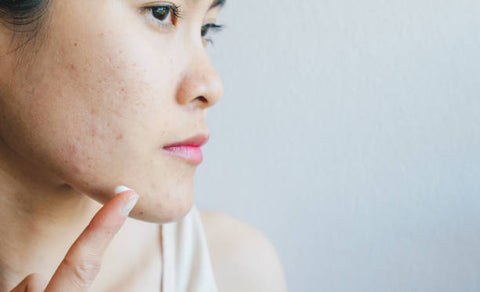Why Isn’t My Skincare Regimen Working?

Every skincare routine is as unique as the person doing it. The kind of products you choose will depend on your skin type, whether you choose to buy an entire kit from one brand or select individual components.
We all want immediate results. However, consistency, time, and patience are necessary for determining whether or not the products are working for your skin.
When and How to Check If Your Skincare Routine Is Effective
Dermatologists say that you have to wait at least 12 weeks or three months to see if your routine is effective. That's because it takes about 28 days for our skin to undergo regeneration. This refers to the process in which new skin cells form, mature, die, and become replaced by new ones.
Our cell turnover rate slows as we age. Dermatologists recommend that you allow the products to go through three cycles of cell turnovers to judge their effects.
But there are some early tell-tale signs that will help you know whether each of your products is taking effect. Let's break it down:
Cleanser
The impact of cleansers takes quite a while to see because they don't sit on your skin that long. You should see a new cleanser’s effect after four weeks if you're using it to improve dry skin or skin that’s blemished due to lack of washing. Your skin should look clear with no leftover from makeup or other dirt. It should also feel smooth and supple.
Toner
Toners contain hydrating ingredients that prepare your skin to better absorb other products. One to two weeks of consistent use should reduce skin redness and gaping pores.
Serum
The active ingredients in nutrient-rich serums change the structure of your skin over the course of six to eight weeks. But their effects are long-term, whether they target acne, aging marks, or dark spots.
Moisturizer
Unless you have super-dry skin, most moisturizers leave your skin feeling softer within the day of application. Consistent use for one to two weeks should reduce scaly skin and excess shine among oily skin types. Shiny skin results when sebaceous glands produce more oil to compensate for dehydrated skin.
Exfoliator
Exfoliators or exfoliants can make your skin tingle and turn red after you apply them. But in the long run, they should reduce bumps and produce smooth and even glowing skin starting on the third to fourth week. You should see their full effect in three to four months.
Anti-acne treatment
Over-the-counter solutions should make your skin clearer and less inflamed within two to three months of continuous use. Spot treatments or doctor-prescribed topical solutions may work in as little as four to six weeks.
How to Tell If Your Skincare Regimen Isn’t Working
There are many products claiming to be the miracle cure for your skin issues. It's also enticing to try products recommended by a friend or beauty influencer. But their success varies from person to person.
The following signs indicate that your chosen products may not be for you:
Your skin feels tight after cleansing.
Feeling dry after washing your face may mean that your products had stripped your skin of its natural protective oils. The right products should make your skin feel hydrated and bright but not oily.
Fix: Look for pH-balanced products with natural surfactants. The primary ingredient in cleansers, surfactants keep oil and water from separating into two layers. They can loosen sebum and dirt trapped in the pores. Avoid harsh varieties such as sodium laureth ether sulfate and sodium lauryl sulfate, which promote dryness. Also steer clear of potentially cancer-causing polyethylene glycol.
Your skin feels itchy or you develop a rash.
If irritation persists for two weeks, you may be having an allergic reaction, so consult your dermatologist. Fragrances, which can be listed as “parfum” or perfume on the packaging, usually tend to cause itching.
Fix: If you don't know which product is causing itchiness, replace them with a basic and gentle cleanser and moisturizer for a week or two. Then start using each of your products again one at a time every few days until you determine the culprit.
Your skin gets flushed or too red.
Something is wrong when the tingling feeling from cleansers or masks lasts for hours. People with pre-existing skin sensitivities like eczema or rosacea are likely to experience this kind of burning or stinging sensation. Solutions with an alcohol or skin-drying base can trigger this reaction.
Fix: Choose a product that's friendlier to sensitive skin. You should also check if you're applying more than what's required on your skin. A pea-sized amount of a cream or liquid solution is generally enough.
You get flaky.
Flaking can be an initial effect of exfoliation. Acne-fighting salicylic acid is a natural exfoliator that also reduces inflammation. But using too many products containing acidic ingredients may cause your skin to peel and redden. You may also be suffering from seborrhea if the flaking happens around your eyebrows or nose.
Fix: Minimize your use of the product or avoid it completely and consult your doctor. Seborrhea usually occurs among oily skin types. The right products should improve skin dryness and flakiness.
Your skin feels oilier or you experience more breakouts.
Your products aren't reducing the sebum buildup on your skin if your breakouts don't ease after a few weeks or you find yourself with more pimples. They may be too harsh that they’re stripping your skin of its natural oils.
Fix: Avoid over-washing, which can dry your skin, and use a gentle cleanser. Use oil-free and non-comedogenic products. Don't skimp on moisturizer because your skin will produce more sebum to lubricate itself when the epidermis turns dry.
How to Introduce New Products to Your Skin
Here are some tips to remember before starting a new skincare routine:
Choose products that are suitable to your skin type and the blemishes you want to treat.
There's no miracle ingredient to meet all of your skin's needs. Different skin conditions—and different blemishes from whiteheads and blackheads to cysts—need different treatments.
Take a patch test.
It can be exciting to try a new line of products right away. But it's best to test it a little on your skin first to know whether your skin can tolerate it. Salicylic, glycolic, or lactic acid can turn your skin pinkish for about 10 to 15 minutes. But if the redness lingers and there's pain, it may be an allergic reaction. You can watch out for these ingredients, which are found in toners, serums, moisturizers, and eye creams.
Apply a new product every five days.
Even if you don't get any negative reaction during your patch test, introduce new products to your skin slowly. This will help you know which product to examine in case you feel anything strange after applying it.
Give products time to dry.
If solutions ball up when you apply one solution after the other, let the first product dry before proceeding with the rest of your regimen.
Stay calm and observant while waiting for the results.
As mentioned earlier, only a few products show immediate results. But don't stress and just stick with it. Like a fitness routine, with unwavering commitment over time, you'll soon be greeted by happy skin.


